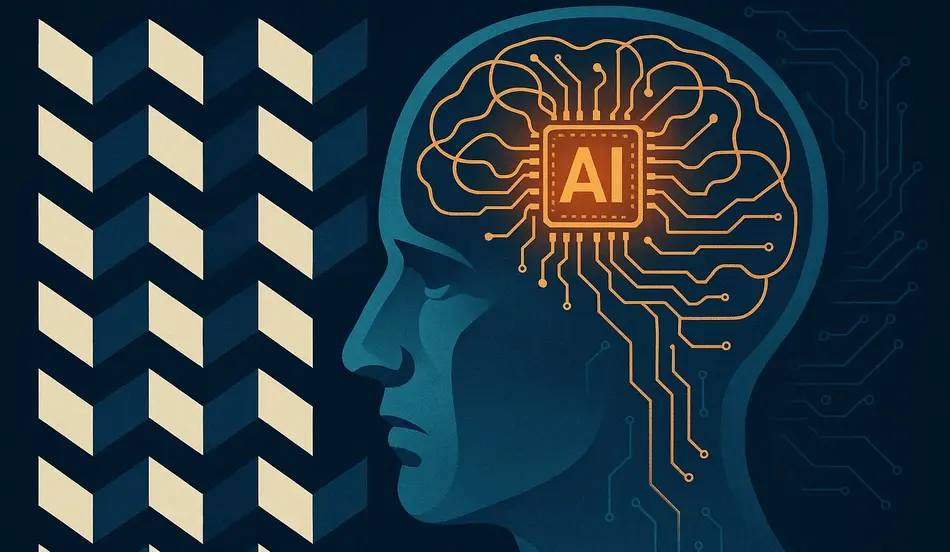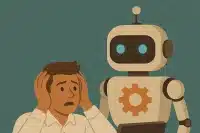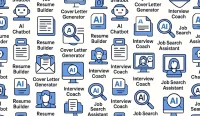The Troubling Reality: AI Reasoning Models Fail at Complex Problem-Solving
The artificial intelligence industry has been riding high on promises of increasingly intelligent systems that can reason like humans. Tech giants and investors alike have poured billions into developing AI models that supposedly “think” rather than simply predict text. However, recent research from Apple, Salesforce, and even AI leaders like Anthropic is casting serious doubt on these claims, revealing that what appears to be reasoning might actually be sophisticated pattern matching with significant limitations.
The False Promise of AI Reasoning Capabilities
The tech world has been abuzz with announcements of AI models that can supposedly reason through problems step-by-step, showing their work like humans do.
The Reasoning Revolution
Major AI labs have been rapidly releasing models with increasingly ambitious claims:
– OpenAI’s o1 and o1 Pro
– Anthropic’s Claude Sonnet 4 and Opus 4
– Google’s Gemini 2.0 Flash
– DeepSeek’s R1
These models purportedly represent a shift from simply predicting words to planning actions through multi-step reasoning processes. As one AI researcher explains: “We know that thinking is oftentimes more than just one shot, and thinking requires us to maybe do multi-plans, multiple potential answers that we choose the best one from: just like when we’re thinking.”
The Reasoning Methods
The industry has developed several approaches to simulate reasoning:
– Chain-of-thought: Breaking problems down step-by-step
– Reflection: Evaluating answers before delivering them
– Multi-planning: Considering multiple approaches before selecting one
Research Reveals Critical AI Reasoning Limitations
A series of research papers has begun exposing fundamental flaws in these reasoning capabilities, with Apple’s bluntly titled “The Illusion of Thinking” paper leading the charge.
The Towers of Hanoi Test
Apple researchers used the classic Towers of Hanoi puzzle to test AI reasoning:
– With three discs, reasoning models performed the same with or without reasoning features
– With slightly more discs, reasoning appeared to help performance
– With seven or more discs, performance collapsed to zero accuracy across all tested models
Similar patterns emerged with other logic puzzles like checkers and river crossing problems, suggesting these models aren’t truly reasoning but rather pattern matching against familiar examples.
Pattern Matching vs. True Intelligence
What these findings reveal is that current AI systems:
– Excel at problems similar to their training data
– Fail when facing truly novel or complex challenges
– Create an illusion of intelligence through sophisticated pattern recognition
– Don’t generalize their abilities to new domains
As one expert noted: “We can make it do really well on benchmarks. We can make it do really well on specific tasks… I think the thing that’s not well understood, and that’s some of those papers you allude to show, is that it doesn’t generalize.”
The Scaling Law Myth and AI Investment Implications
The AI industry has been built on what’s called “the scaling law” – the belief that larger models with more data inevitably become smarter.
When Scaling Breaks Down
The research on reasoning limitations challenges this fundamental assumption:
– Previous scaling plateaus in late 2024 triggered an “existential crisis” in the AI industry
– Nvidia stock fell into correction territory in early 2025
– Industry leaders like Sam Altman insisted “There is no wall”
– Reasoning capabilities were positioned as the escape hatch from scaling limitations
The Trillion-Dollar Question
If reasoning models don’t scale as promised, the implications for tech investment are profound:
– Jensen Huang of Nvidia has claimed reasoning models require “100 times more” compute than previous models
– This projection has fueled massive infrastructure investment
– Corporate America has begun betting heavily on AI transformation
– JPMorgan CEO Jamie Dimon admitted “the benefit isn’t immediately clear”
Corporate AI Adoption Despite Reasoning Limitations
Despite these emerging concerns, businesses continue accelerating AI adoption, creating a potential disconnect between expectations and reality.
The Enterprise AI Rush
Companies across industries are implementing AI solutions:
– According to recent surveys, enterprise AI adoption increased 43% in 2024
– 78% of Fortune 500 companies now have dedicated AI strategies
– The average enterprise AI budget has doubled since 2023
– Most implementations focus on narrow, specialized use cases
Find AI-Related Jobs on WhatJobs
Specialized vs. General Intelligence
The research suggests we’re entering an era of specialized AI rather than general intelligence:
– Models trained for specific tasks perform well within narrow domains
– Companies may need multiple specialized models rather than one general system
– This approach contradicts the superintelligence narrative driving much investment
Hiring?
Find AI Specialists Who Understand Both Potential and Limitations
As the AI landscape evolves, businesses need talent that can navigate the reality behind the hype. Post your positions on WhatJobs to connect with AI specialists who understand both the capabilities and limitations of current technology.
🚀 Post AI Roles for FreeThe Superintelligence Timeline Recalibration
The limitations in reasoning capabilities are forcing a reconsideration of how close we truly are to artificial general intelligence (AGI).
Pushing Back the AGI Timeline
Experts are increasingly skeptical about near-term superintelligence:
– “I think the sort of artificial superintelligence is much farther away than we thought.”
– “The superintelligence as the thing that’s all knowing and can do everything, that’s many, many more years out.”
– “Probably, we need major breakthroughs that we don’t have yet to get there.”
Strategic Industry Implications
The definition and timeline of AGI has significant business implications:
– OpenAI’s partnership with Microsoft ends once OpenAI declares AGI achievement
– The definition of intelligence becomes a strategic business consideration
– Control over AI’s future may hinge on who gets to define true intelligence
The Future of AI Development Amid Reasoning Limitations
As the industry grapples with these limitations, new approaches to AI development may emerge.
Beyond Current Paradigms
Researchers are exploring alternative paths to more robust AI:
– Hybrid systems combining neural networks with symbolic reasoning
– Incorporating causal reasoning rather than pure correlation
– Developing more transparent models that can explain their reasoning process
– Creating systems with stronger built-in knowledge verification
Realistic Expectations
For businesses and investors, setting appropriate expectations is crucial:
– Current AI excels at specific, well-defined tasks
– General reasoning across domains remains challenging
– The path to superintelligence may require fundamental breakthroughs
– Near-term value comes from targeted applications rather than general intelligence
Making Informed AI Investment Decisions
With a clearer understanding of AI reasoning limitations, organizations can make more strategic technology investments.
Focus on Proven Value
The most successful AI implementations share common characteristics:
– Clear, measurable objectives
– Narrow, well-defined use cases
– Realistic expectations about capabilities
– Continuous human oversight and evaluation
– Iterative improvement based on real-world performance
Beyond the Hype Cycle
As the industry matures, value will increasingly come from:
– Practical applications solving specific business problems
– Integration of AI into existing workflows and systems
– Complementary human-AI collaboration
– Specialized models for particular domains
– Transparent assessment of capabilities and limitations
FAQ: Understanding AI Reasoning Limitations
What exactly are AI reasoning limitations and why are they significant?
AI reasoning limitations refer to the inability of current AI systems to perform genuine reasoning beyond pattern matching. Despite impressive demonstrations, research shows these models fail when faced with complex, novel problems. This is significant because the AI industry has positioned reasoning capabilities as the next frontier beyond simple text prediction, justifying massive investments in compute infrastructure and model development. Apple’s research demonstrates that even advanced models from OpenAI, Anthropic, and Google collapse to zero accuracy when logic puzzles become sufficiently complex, suggesting fundamental AI reasoning limitations that may require new approaches to overcome.
How do AI reasoning limitations impact business investment in artificial intelligence?
AI reasoning limitations directly affect the return on investment for companies pouring billions into AI development and implementation. Jensen Huang of Nvidia has claimed reasoning models require “100 times more” compute than previous models, driving massive infrastructure spending. If these models don’t deliver the promised capabilities, businesses may find themselves investing in expensive technology with diminishing returns. JPMorgan CEO Jamie Dimon acknowledged that despite significant AI investment, “the benefit isn’t immediately clear.” Companies should recalibrate expectations, focusing on narrow, specialized applications where current AI excels rather than expecting human-like reasoning capabilities across domains.
What does the research on AI reasoning limitations tell us about the timeline for achieving artificial general intelligence (AGI)?
Research on AI reasoning limitations suggests that AGI is likely much further away than many industry leaders have claimed. As one expert noted, “the superintelligence as the thing that’s all knowing and can do everything, that’s many, many more years out.” The fundamental AI reasoning limitations exposed by Apple and other researchers indicate that current approaches may hit inherent barriers that require entirely new breakthroughs to overcome. This has strategic implications for companies like OpenAI and Microsoft, whose partnership agreement ends once AGI is achieved, making the definition and timeline of true intelligence both a technical and business consideration.
How should organizations adapt their AI strategies in light of these AI reasoning limitations?
Organizations should adapt their AI strategies by focusing on specific, well-defined use cases rather than expecting general reasoning capabilities. Successful implementations will require multiple specialized models rather than a single general system, with clear metrics for success and continuous human oversight. Companies should invest in AI literacy among decision-makers to distinguish between genuine capabilities and marketing hype. Most importantly, businesses should view AI as a complement to human intelligence rather than a replacement, designing workflows that leverage the pattern-matching strengths of current AI while compensating for its reasoning limitations through human collaboration.
What alternative approaches might overcome current AI reasoning limitations?
Researchers are exploring several promising directions to address AI reasoning limitations. These include hybrid systems that combine neural networks with symbolic reasoning frameworks, incorporating explicit causal reasoning rather than relying solely on correlations, developing more transparent models that can explain their reasoning process, and creating systems with stronger built-in knowledge verification mechanisms. Some experts believe entirely new paradigms beyond current large language models may be necessary to achieve robust reasoning capabilities. The most promising approaches will likely involve AI systems that can recognize their own limitations and defer to human judgment when facing unfamiliar or complex reasoning challenges.
The research on AI reasoning limitations represents a crucial reality check for an industry that has often prioritized hype over honest assessment. While current AI systems deliver impressive results in specific domains, the path to true artificial general intelligence appears longer and more complex than many have claimed. For businesses, investors, and technology professionals, understanding these limitations is essential for making informed decisions about AI adoption and development.
Rather than diminishing AI’s potential, acknowledging these challenges allows us to focus on practical applications that deliver real value today while pursuing the fundamental breakthroughs needed for tomorrow’s more capable systems. The most successful organizations will be those that can separate AI fact from fiction, leveraging current capabilities while maintaining realistic expectations about the road ahead.




